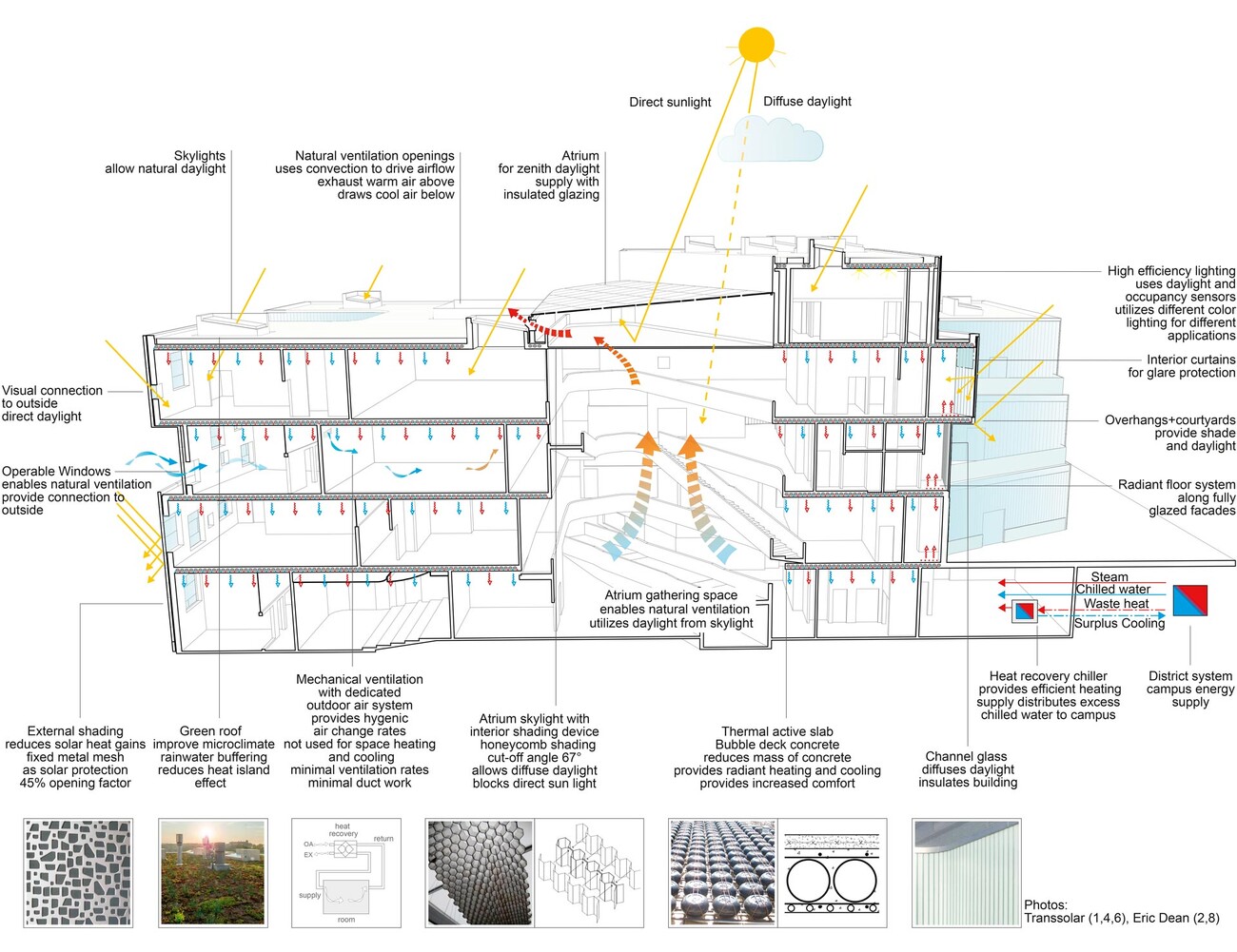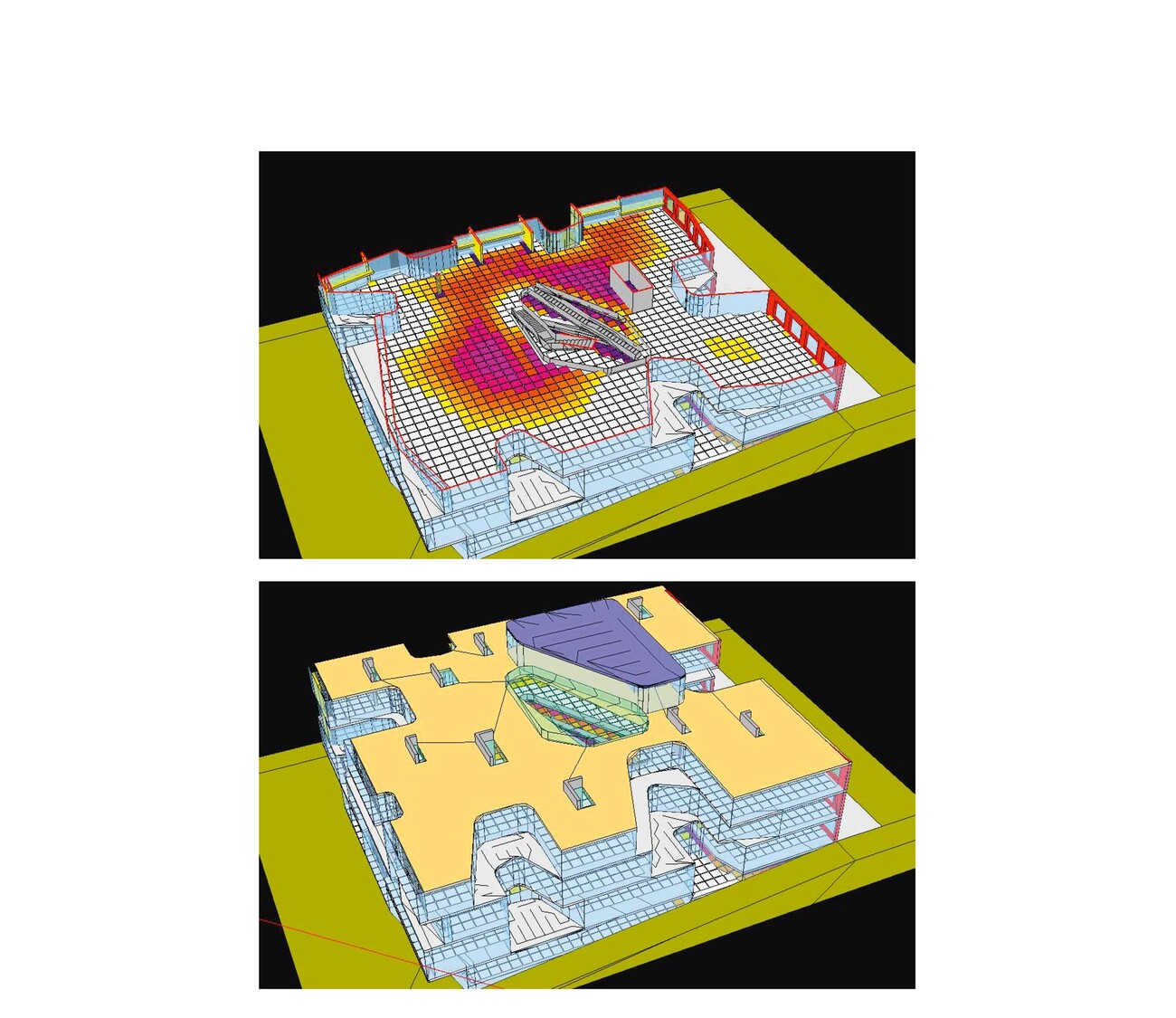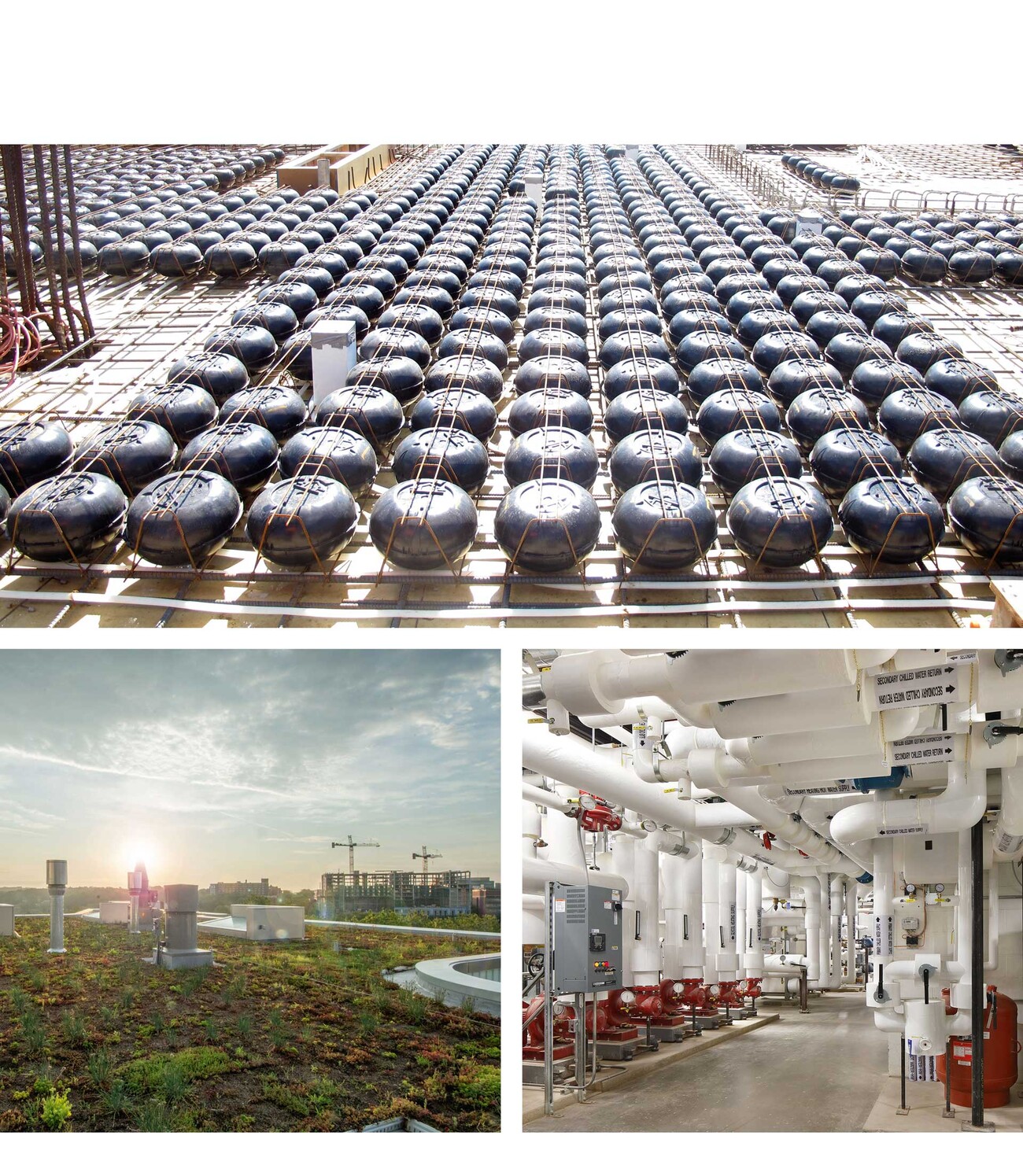Visual Arts Building, Iowa City, IA, USA


The new Visual Arts Building accommodates teaching and studio spaces relocated from the former faculty building. This historic building from 1936 had been badly damaged by flooding in 2008. The new building provides loft-like spaces for the departments of ceramics, sculpture, metals, photography, 3D multimedia and print-making. It also includes graduate student studios, faculty and staff studios, plus offices and gallery spaces. The rectangular plan is interrupted by six cutaways embracing courtyards around the perimeter and a central atrium that is bridged with staircases to join the four floors. The mixed program with offices and studios for different arts creates various requirements for visual and thermal comfort. Transsolar developed a climate concept that addresses the high demand for ventilation, energy and light.
A vast horizontal skylight with a fixed honeycomb light scattering element flushes the atrium with diffuse daylight. Façade intersections and high ceilings optimize daylight levels. Various configurations of diffuse and clear window elements provide either a visual connection to the outside or diffuse light for inspired learning and working. The courtyards are surrounded by translucent channel glass and the southeast and southwest facades are shaded to protect from solar gains with custom perforated stainless steel panels. Detailed investigations, measurements, as well as daylight and thermal simulations supported the architectural design process to optimize these façade and shading elements.
Thermal comfort is ensured by heating and cooling the structure rather than conditioning and recirculating large amounts of air. The structural conditioning is very efficient operating at moderate temperatures. As the building is heated and cooled by ‘active’ slabs, radiant tubing was integrated in a light ‘bubble-deck’ cast in-situ concrete floor construction– the first such installation in the United States. The reduction of concrete off-set the cost of the bubbles - with a net positive impact on embodied energy.
Since space heating and cooling is not performed by air, plant rooms, air distribution systems and ductwork is minimized. The hygienic outside air is provided via low velocity displacement ventilation from above. The used air is exhausted naturally through the central atrium. The operable windows allow not only for scenic campus views but also natural ventilation. Rather than isolating the internal program from the outside, several balconies, arising from the geometry of the building, and the green roof provide outdoor meeting spaces and informal exterior working space.
The building is connected to the campus district cooling and heating system. In winter, a dedicated heat recovery chiller in the building extracts heat from the campus cooling loop, creating an energetic synergy with other buildings on campus requiring cooling all year long.
The building is projected to consume 60% less energy than a code compliant building.
2019 LEED Gold Ver. 2009






